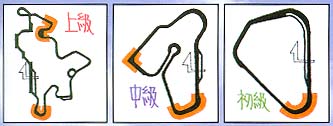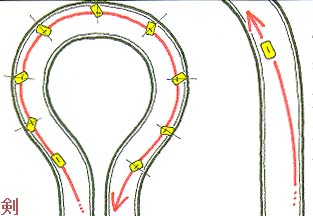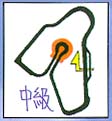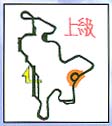This not only applies to all racing games, but also to real-life racing.
Small Turning Angle
The best way to get a corner correctly passed is to drift with the smallest turning angle.
What does it mean? The car must be running with the most straight line.
With this, your car won't lose much speed, even during cornering, but also you'll get the best speed when finishing the curve.
Steer in Advance
When your car is going in a straight direction and you want to turn it left or right, you'll notice that the car doesn't change direction instantly. Instead, the car starts to gradually change direction.
This is because of the inertia that's being applied in the car's direction, forcing it to go straigth.
To be able to null this inertia and change the car direction almost instantly, you'll have to apply a counter-force. This is pure phisics, so while you're turning the car, only a portion of the turning force is used to stop the straight inertia. This results in a loss of time, since your car will only turn totally after going straight for some seconds. If you take these couple of seconds to steer before reaching the corner, you'll have a better angle when you actually enter the curve. This will benefict your cornering
Drifting
It's very rare to see someone drift a car around the city. Generally, people just turn the car by steering, adjusting the speed and braking. It's the safest method, but when you're racing, what you need is speed. A fast way to pass the corners without losing your position. In the diagram below, the green arrow indicates the forward force of the car. The blue arrow indicates the centripetal force when cornering, and the orange arrow is the result - the actual direction that the car is going. As you can see, while drifting, the orange arrow is nearer to the direction that the car should go. When compared with a normal cornering, you can accelerate more when your car is drifting. This will give you greater speed when you come out of the curve. Also, you must note that a precise control of the steer and gas pedal is required to correctly achieve this. If you excess, the car will overturn and possibly hit the wall, the rail or simply start to spin and out of control.
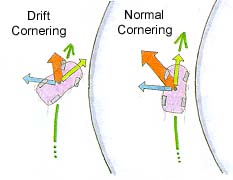
Below are the continuous snapshots of a player performing a drift in the L-shaped corner of the Advanced track. Follow these as a guide and you'll know what to do when you need to drift.

Now that you have an idea on the nş1 rules, let's get into the details of cornering in the game.




